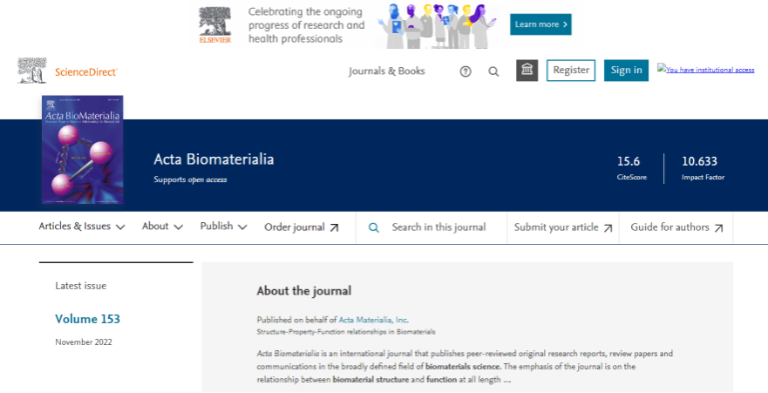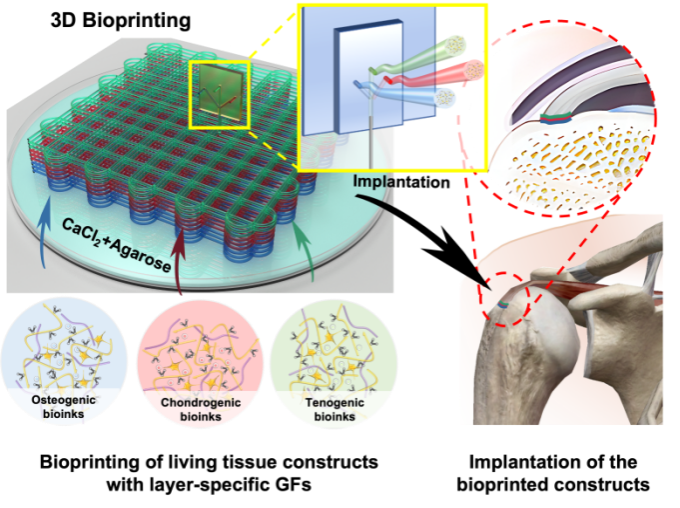Poor tendon-to-bone healing is an important cause of re-tearing after rotator cuff repair. Reconstruction of tendon-to-bone interface by tissue engineering has become a hot spot in the field of rotator cuff repair. Recent studies have shown that tendon-to-bone healing is a regeneration process of heterogeneous multi-layer tissues including bone-cartilage-tendon under the spatiotemporal synergistic effect of stem cells and multiple differentiation-promoting factors. Therefore, how to provide a sufficient amount of stem cells in the damaged local area is a challenge with significant research value. Currently, the localization, duration and release sequence of multiple cytokines is poorly controlled.
To resolve this problem, Department of Orthopedics of the First Affiliated Hospital of Xi’an Jiaotong University (XJTU) joined hands with the State Key Laboratory for Manufacturing Systems Engineering, School of Mechanical Engineering of XJTU to publish an article entitled "Bioprinted living tissue constructs with layer-specific, growth factor-loaded microspheres for improved enthesis healing of a rotator cuff" in Acta Biomaterialia (DOI: j.actbio.2022.10.058). Professor He Jiankang, Deputy Director of the State Key Laboratory for Manufacturing Systems Engineering, School of Mechanical Engineering of XJTU and the awardee of National Science Foundation for Distinguished Young Scholars, and Yin Zhanhai, Chief Physician of Department of Orthopedics of our hospital are the co-corresponding authors. Bai Lang, a doctoral student from Department of Orthopedics, is the first author. Doctoral students Han Qian and Meng Zijie are the co-first authors of this article. The impact factor (IF) of Acta Biomaterialia is 10.633 in 2022, classified in Q1 Area by JCR and Chinese Academy of Sciences in the field of engineering science and material science.


In this study, cell printing technology via multi-channel micro-extrusion was adopted to construct multi-phase tissue engineering scaffolds. Stem cells-loaded scaffolds were used for tissue repair, and the structure of the scaffolds was adjusted to realize spatiotemporal controllable release of multiple cytokines.In vivoandin vitroexperiments confirmed the role of the scaffolds in promoting the bionic reconstruction of tendon-to-bone interface, thereby providing a novel solution for preventing postoperative re-tear of rotator cuff.
Preliminary findings of this project have been published in Chemical Engineering Journal (IF: 13.273) and Theranostics (IF: 11.556),etc.